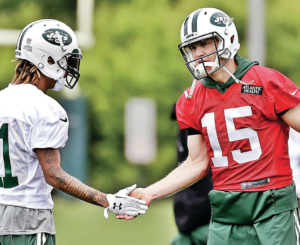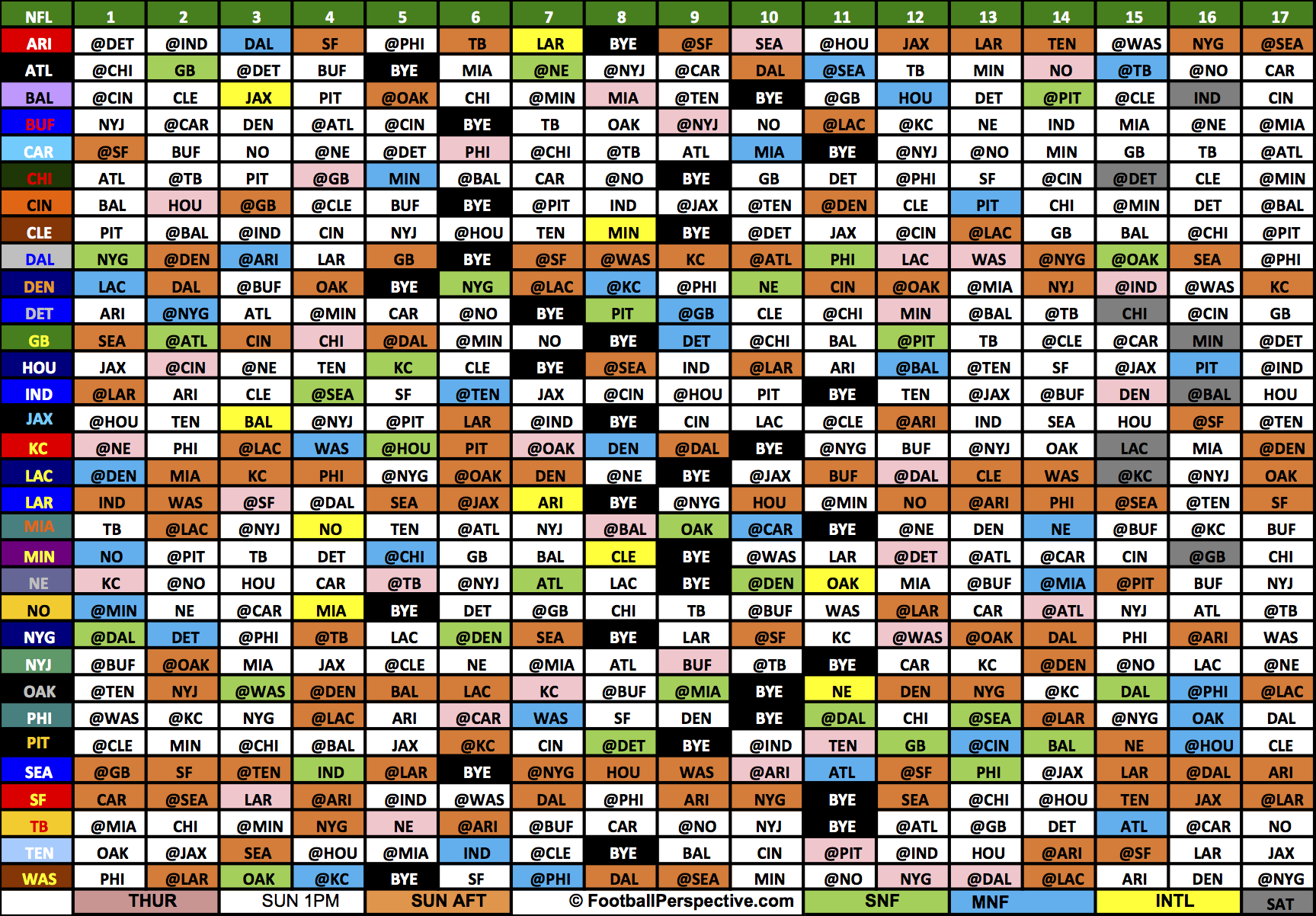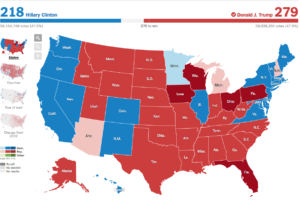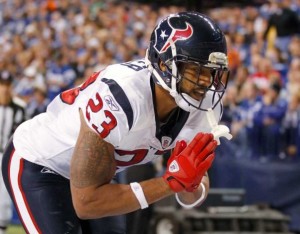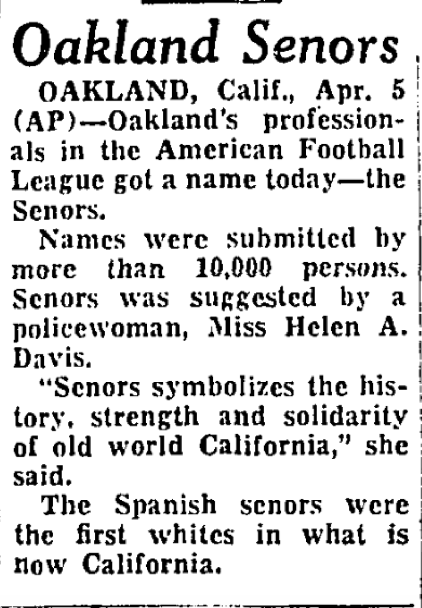In one week, one AFC team is going to be very unhappy. Despite being a good sized favorite to make the playoffs, they will wind up sitting at home. The Chiefs, Bills, and Steelers have all qualified for the postseason, leaving five teams to battle for the final four spots. Tennessee and Indianapolis are still fighting for the AFC South crown; at least one of these teams is guaranteed to advance. The other team is battling the Ravens, Browns, and Dolphins for the final two spots.
What’s interesting is all five teams — TEN, IND, BAL, MIA, and CLE — have a greater than 70% chance of making the postseason. Each team is currently 10-5, but the Colts are the only team not in control of their own destiny: Indianapolis loses the division tiebreaker to Tennessee and has the weakest conference record (the downside to going 4-0 against the NFC South) while also losing head-to-head against the Ravens and Browns. But the Colts also have the easiest week 17 opponent (Jacksonville) and are in if any of the other four teams lose.
So who is in under what scenario? Thanks to @NFLResearch, here is a handy guide as to who makes the playoffs based on how each of the five key week 17 games unfold:

I went ahead and calculated the likelihood of each scenario based on the current NFL spreads (you can convert a points spread to a pre-game probability using this formula). Right now, the lines are Tennessee -7.5 against Houston, Miami +3.5 against Buffalo, Baltimore -11.5 against Cincinnati, Cleveland -6.5 against Pittsburgh, and Indianapolis -14 against Jacksonville. This means the Dolphins are the only team expected to lose this weekend, although Miami can still make the postseason with a loss if either Indianpolis or Cincinnati pull off the big upset, or the Browns lose to the Steelers.
Oh, and about that Browns/Steelers game. You might be surprised to see that Cleveland is favored by nearly a touchdown; that’s because Vegas is assuming the Steelers rest their starters, as they don’t have too much to play for. Pittsburgh will be either the 2 or the 3 seed, and the difference between those two spots may not be as valuable as giving the starters a week off (and if Buffalo loses tonight, Pittsburgh would be locked into the 2 seed).
I created an AFC playoff matrix in Excel that you can download here. You can update that using whatever point spread you like. But based on the current point spreads and related win probabilities, here is how likely each result would be:
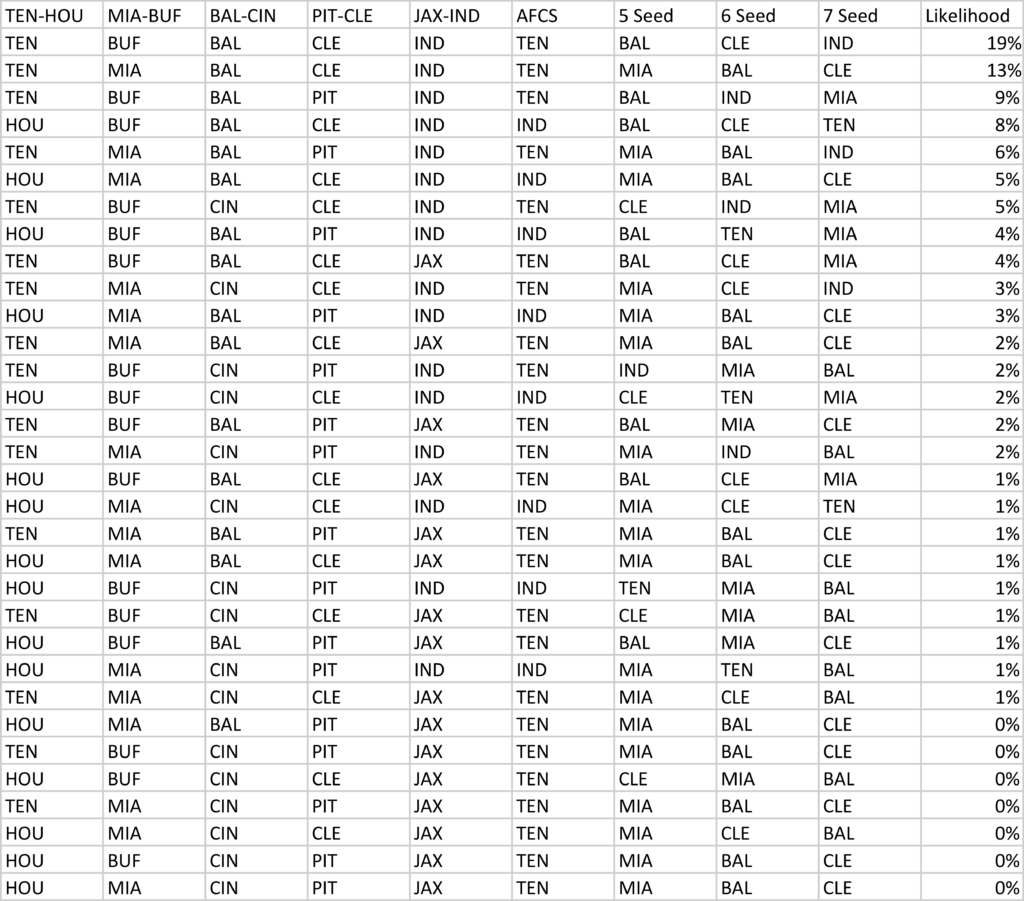 And that translates to the following playoff odds for each team:
And that translates to the following playoff odds for each team:
 Now, let’s say Buffalo wins tonight and the Steelers announce that they will be competing in week 17. Perhaps the point spread moves to a pick’em; in that case, Tennessee would stay at 92%, Baltimore would rise to 91%, Cleveland would drop to 62%, Miami would rise to 80%, and the Colts would move into the fourth-best odds at 75%.
Now, let’s say Buffalo wins tonight and the Steelers announce that they will be competing in week 17. Perhaps the point spread moves to a pick’em; in that case, Tennessee would stay at 92%, Baltimore would rise to 91%, Cleveland would drop to 62%, Miami would rise to 80%, and the Colts would move into the fourth-best odds at 75%.
Feel free to download the spreadsheet and play around with any scenario you want. Which team would you least want to be heading into this weekend?



